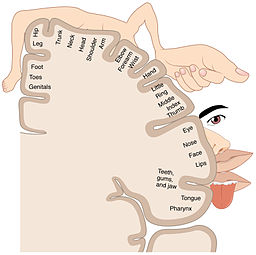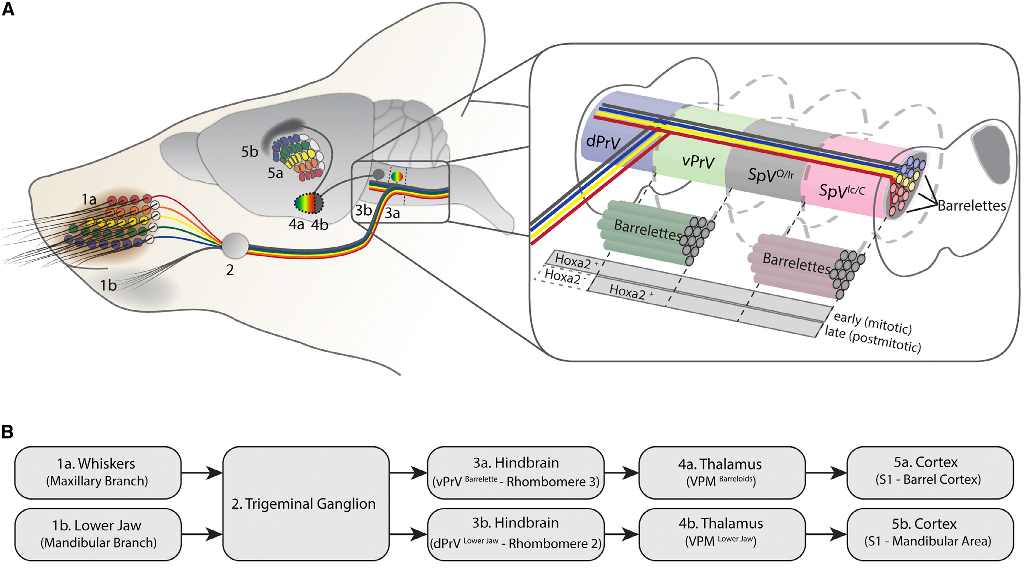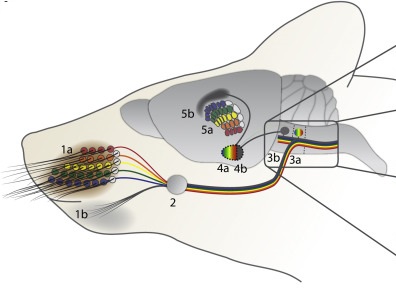
In the 1950s, the neurologist Wilder Penfield found that different parts of the body correspond to physically distinct locations in the brain, which he represented in cartoon form as the sensory homunculus. After several decades of further research, one of the questions that still eludes scientists is how these brain maps form in the first place. As a model, scientists have been studying how mouse whiskers (which are critical for perceiving their surroundings) are charted in mouse brains. Whisker sensation is faithfully transposed across different levels of the brain, starting with the brainstem, then moving up to the thalamus, and finally the cortex. A new study in Cell Reports shows that non-whisker neurons in the brainstem can be rewired to render whisker maps by switching on a single protein called Hoxa2. Production of Hoxa2 is typically turned off in the neurons that process jaw sensation, but when researchers switched Hoxa2 back on, these neurons started registering as whisker neurons, triggering new formation of the respective maps. It is especially surprising that this one protein can alter whisker circuitry because a partner study from the same group showed that even when model mice actually grow whiskers in a normally whisker-free part of their faces, it’s not enough to create a new sensory map (in Development). A better understanding of sensory wiring may help to explain some neurodevelopmental disorders or altered sensation following injury, like phantom pain, say the authors.

Image credits:
Bechara A et al. Cell Rep. 2015 Oct 14. pii: S2211-1247(15)01042-6. http://www.cell.com/action/showImagesData?pii=S2211-1247%2815%2901042-6. CC BY-NC-ND license (http://creativecommons.org/licenses/by-nc-nd/4.0/). (image content abridged)
Sensory homunculus by OpenStax College [CC BY 3.0 (http://creativecommons.org/licenses/by/3.0)], via Wikimedia Commons

